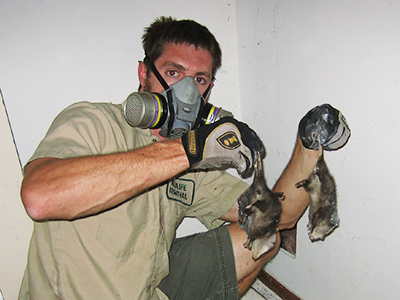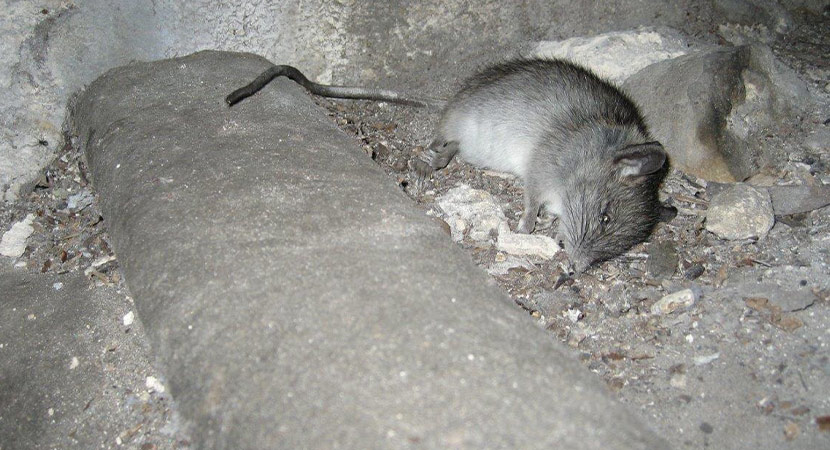Call me: 973-668-4934
Welcome to Paterson Dead Animal Removal! Got a terrible smell in your house, or do you see a dead critter on your property? We are an animal control company specializing in the removal of dead animals from your home, attic, basement, walls, yard, or any part of your property. You clearly don't want a dead animal in your house. Carcasses attract flies and give off terrible smells, not to mention the potential diseases rotting flesh can cause. Whenever we remove dead animals, we use 100% safe methods and make sure to disinfect your home and get rid of all traces of odor. Click here for Free Roadkill Removal and click here for Dead Pet Body Removal. For deceased wild animals in your home or property, call us anytime at 973-668-4934 to schedule an appointment for today! We come out fast! Some of the services we offer include:
- Dead Animal Removal
- Foul Odor Diagnosis
- Full Property Inspections
- House Damage Repairs
- Dead Body Location Services
- Proper Carcass Disposal
- Cleanup & Decontamination Services
- Deodorization Services
CALL US ANYTIME AT 973-668-4934

Our company is a premier dead animal removal service with over ten years of delivering an outstanding quality of service. Whether you have a rodent, raccoon, bird, bats, deer, or other expired wild animals in and outside of your house, we will be there to bail you out of your situation. We can guarantee a 100% removal; we will ensure that the carcass, along with the contaminated materials, diseases, and parasites, will be eliminated. Our people have gone through a series of training that allows them to handle this with ease and safely. We will use cleaning solutions that will not irritate your lungs or skin. Our deodorizers are also certified safe; you can choose from various products such as ozone air cleaners and antibacterial sprays. We also protect our people by equipping them with protective gear and the right tools. As one of the leading service providers in the area, we know how dead animal problems can happen at any time. Therefore, we are offering our services 24/7; you can reach out to us even during holidays and weekends, and you can guarantee that someone will answer your call at the end of the line. We can also provide a same-day job with no extra charges. Contact us today and know how you can avail of our latest deals and discounts.
What Prices Do We Charge?
Learn about dead animal removal costs - each situation is different!
What if you found roadkill or a dead animal such as a deer in a public place, and you want the city or Passiac County services to remove it for free? Click here for Free Passiac County Dead Animal Removal services. What if a farm animal like a horse, or your beloved pet dog or pet cat has died and you need the body taken away? Click here for Dead Pet Body Removal.
We are experts in dead animal removal, and take our job seriously. When removing dead animals, we do a COMPLETE job — not only do we remove the dead animal from your home or yard, we also decontaminate the area, deodorize it, and dispose of the animal or cremate it. If you aren't sure whether the stench in your house is due to a rotting carcass or another reason, we can sniff it out with our noses from our years of experience. We remove dead raccoons, dead opossums, dead skunks, dead squirrels, dead birds, even dead dogs and cats. We frequently remove dead rodents from inside walls, because poison kills rats and mice, who die in your house. We completely solve your dead animal problem by taking these steps:
- Sniff out the dead animal if it is somewhere in your home
- When necessary, for example if the animal is in a wall or under your house, cut a hole to remove the animal
- Remove the dead animal, safely and completely (and seal the hole if needed)
- Finish the job by decontaminating and deodorizing your home
- Properly dispose of the dead animal through incineration or other means
- Prevent it from happening again by finding out how they got in your house
Dead animal carcass removal is specialty work. Sometimes the job is simple, such as a dead opossum in the yard, in which case we can simply wear our gloves and respirator mask, bag the carcass, and take it away for incineration. Sometimes this is more complex, such as when the dead animal is under a home crawlspace, under a porch or deck or shed. Or if the animal is larger, such as a dog or a deer. The most complex cases are dead animals inside the house. The animal may have died inside the attic, or down in the walls, or the duct work, or any other part of the architecture. You may have a bad smell in your home, and you're not even sure what's causing it. We've removed not just dead animals, but rotting food, bad mold, etc. We specialize in locating the source of the smell, and we very commonly cut a hole in the ceiling or wall to remove the animal. We remove every bit of the carcass, mop up the juices, vacuum the maggots, spray it and wipe it down with disinfectant, cleaner, and we repair the hole we cut. In some cases we use ozone machines to neutralize odor.
Paterson Dead Animal Tip: Life cycle of flies on dead carcass

Scavenging pests are naturally attracted to carcasses. Flies are the major category of pests attracted to carcasses. These natural decomposers are drawn to carcasses because of the role the carcasses play in their life cycle.
Let’s consider the life cycle of the flies on dead carcasses as well as the relationship with carcasses. The flies associated with dead animals are either blow flies or flesh flies. These are the main scavenger flies. Blow flies are more commonly associated with dead animals.
Blow flies are natural scavengers and are drawn to decomposing material. Apart from decomposing carcasses, they are found close to garbage bins, landfills, kennels, and poultry barns. The abundance of decomposing material in these areas attracts the flies. Both types of flies undergo complete metamorphosis, with a life cycle that goes through four stages: egg, larva, pupa, and adult.
Life cycle of blow flies and flesh flies
The adult flies lay eggs that hatch into larvae. The larvae molt into pupae, which become adults. The female adult blowflies can feed on carcasses. They also lay eggs that hatch into larvae within a short period. It could take just one hour for the eggs to hatch into larvae. Larvae of blow flies and flesh flies feed on carcasses. They particularly help to decompose carcasses. After sufficiently feeding on the carcass, for up to a few weeks, larvae molt into pupae. The pupae leave the decomposing carcass for a more suitable area where they will develop into adults. The pupae of blow flies and flesh flies prefer drier surfaces where they can easily molt into adults.
The relationship between flies and carcasses
The larvae of blow flies and flesh flies are decomposers that will hasten the decay of carcasses and other organic materials. By feeding on the carcass, the larvae hasten the decay.
It is noteworthy that the relationship between flies and carcasses is dependent on the state of the carcass. The adult flies will lay eggs on the carcass when a sufficient proportion is still yet to be decayed. The first set of female flies could lay eggs on the carcass. The eggs eventually develop into adults after the required period. This new set of adults will not lay eggs on the carcass because there won't be sufficient material to decompose.
Flies apply their sense of smell in finding new material to infest. They can detect carcasses within 20 minutes of the death of the critter. Because of this close relationship, flies could be a better indication of the presence of decaying material than the smell. Carcasses begin to smell after the decay has been properly initiated by the activity of the larvae. Blow flies and flesh flies will always be drawn to an area with decaying carcasses. The adult and larval flies are decomposers that contribute to the decay of the carcass. The maggots that are usually associated with carcasses are produced by house flies and blow flies.
The flies are drawn to carcasses in indoor and outdoor environments. If the flies were already in the area, they would rush to the carcass and begin the decay in no time. Carcasses are considered hazardous materials because of the infectious agents they carry as well as the pests they attract. Pests like flesh flies and blowflies can spread diseases, especially in indoor areas. When the flies infest homes, for example, they can travel far away from the location of the carcass and lay their eggs on food and other surfaces. The flies found on carcasses are drawn to them because they are decomposers that cause the decay of the carcass. The life cycle of these flies is divided into four stages: egg, larva, pupa, and adult. The adult and larval stages are involved in the decay of carcasses. Dead animals in an area will definitely draw blow flies and flesh flies. Dead animals are basically a feast for these critters and provide a suitable environment for reproduction. The population of flies in an area is bound to increase with a carcass. Because of the close relationship between the flies and carcasses, the activity of flies in an area could be closely monitored to locate carcasses and remove them.
We service nearby towns such as Passaic, Paterson, Clifton, Wayne, West Milford, Little Falls, Wanaque, Totowa, Ringwood, Hawthorne, Woodland Park, Pompton Lakes, North Haledon, Bloomingdale, Haledon, Prospect Park,.